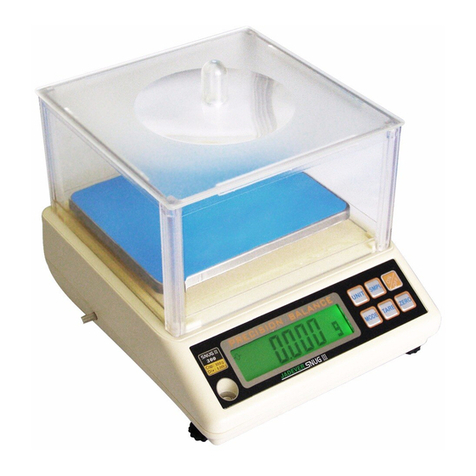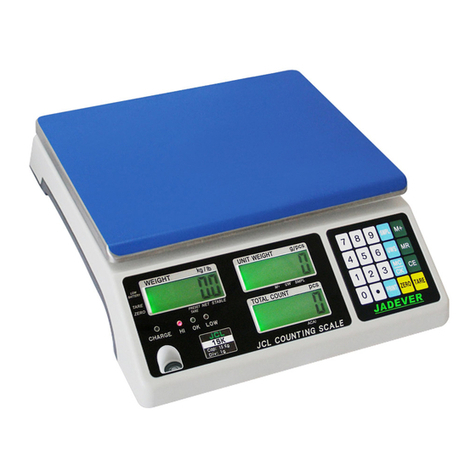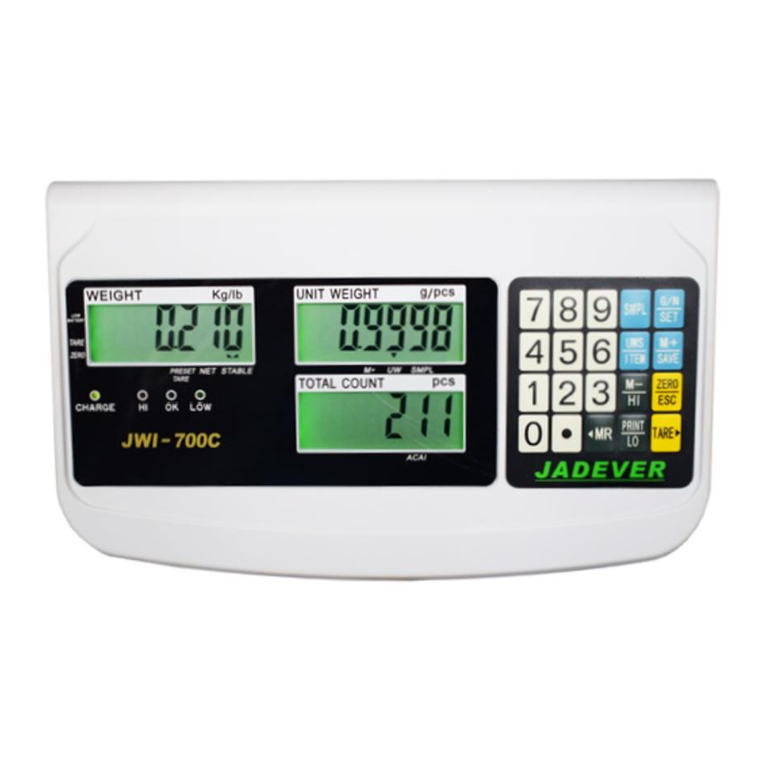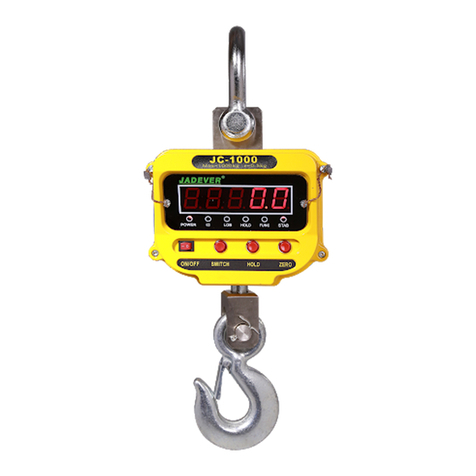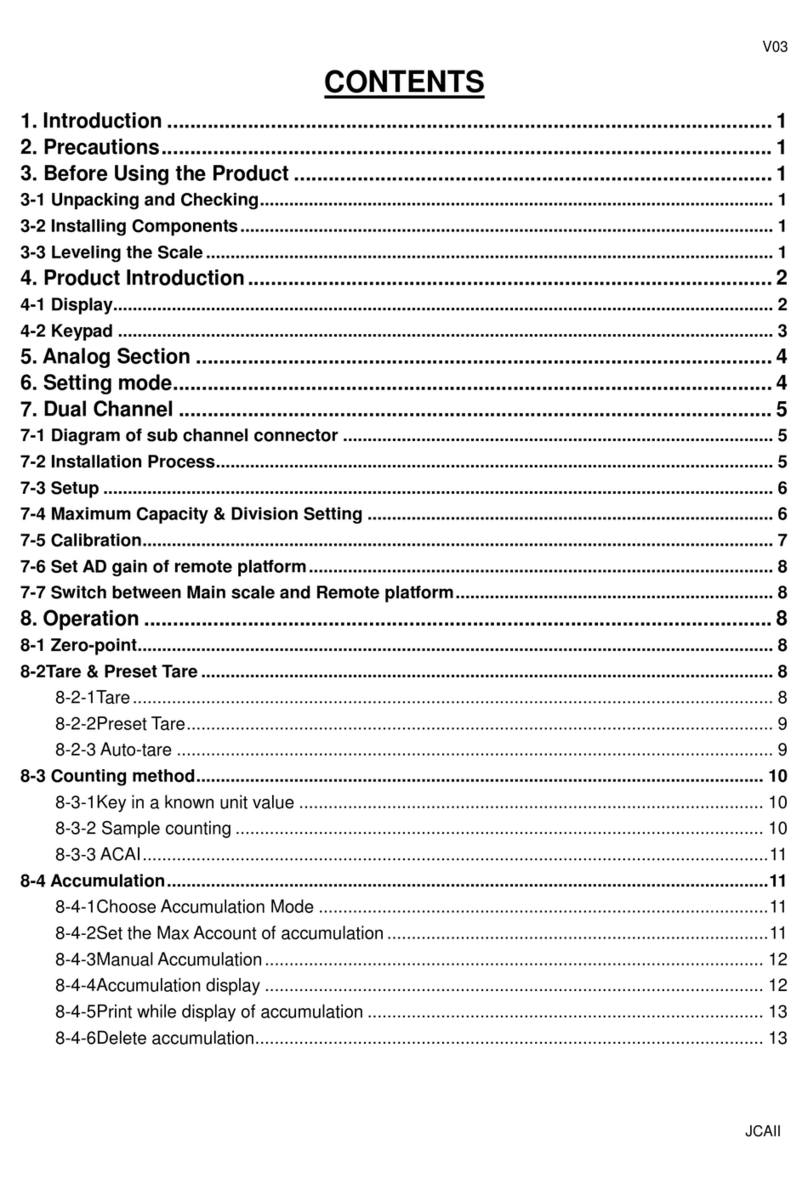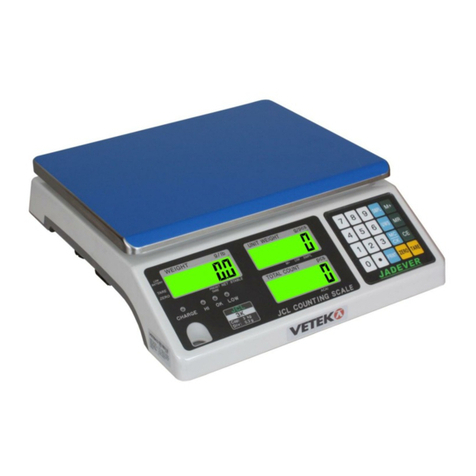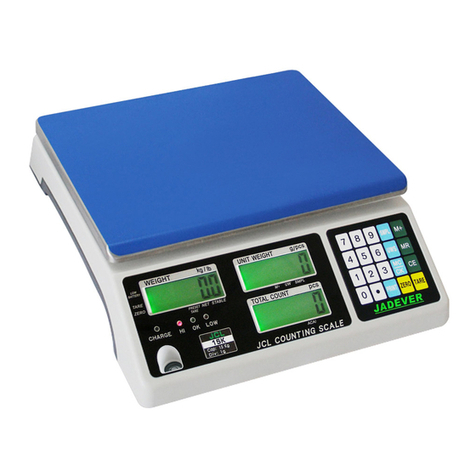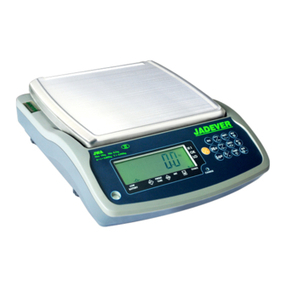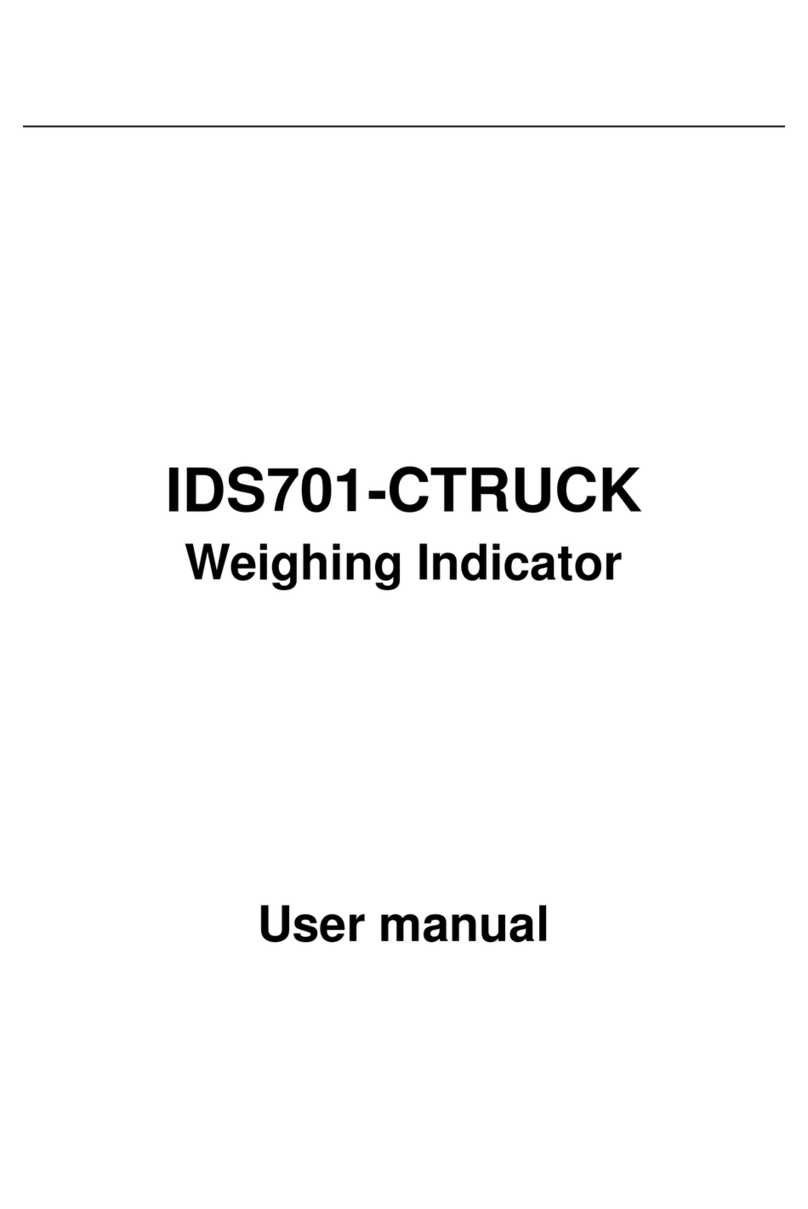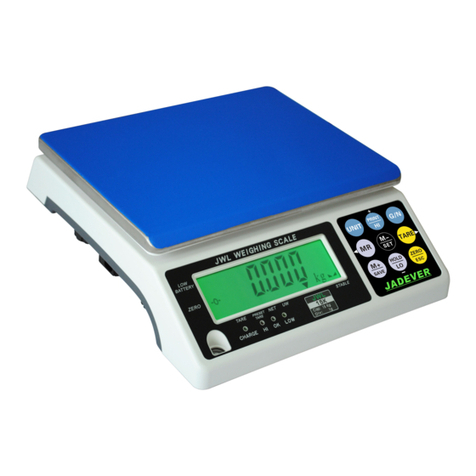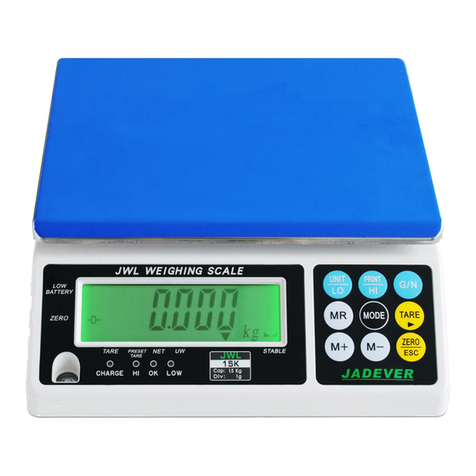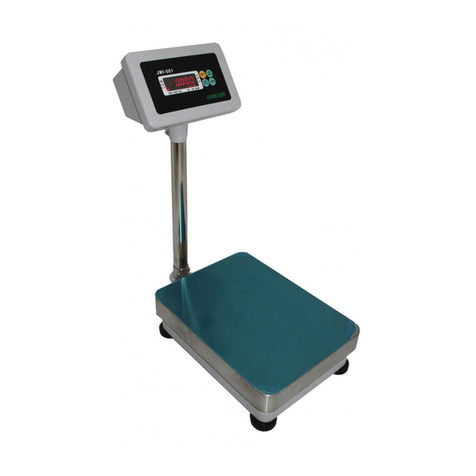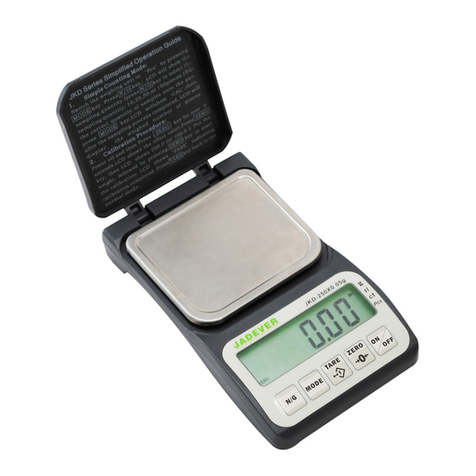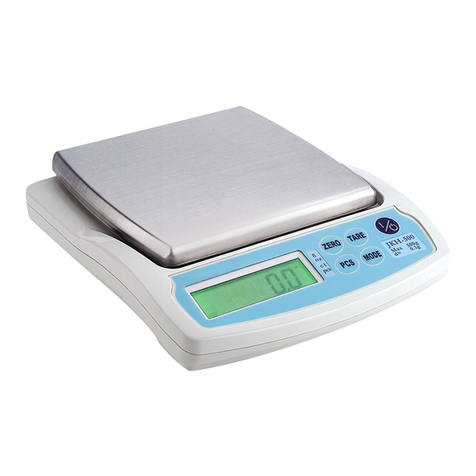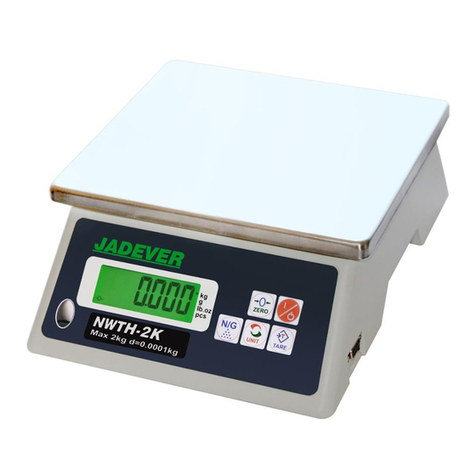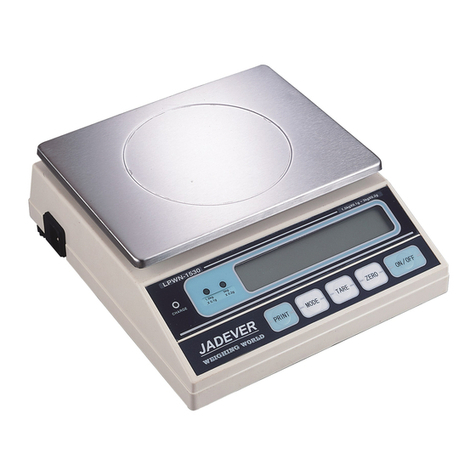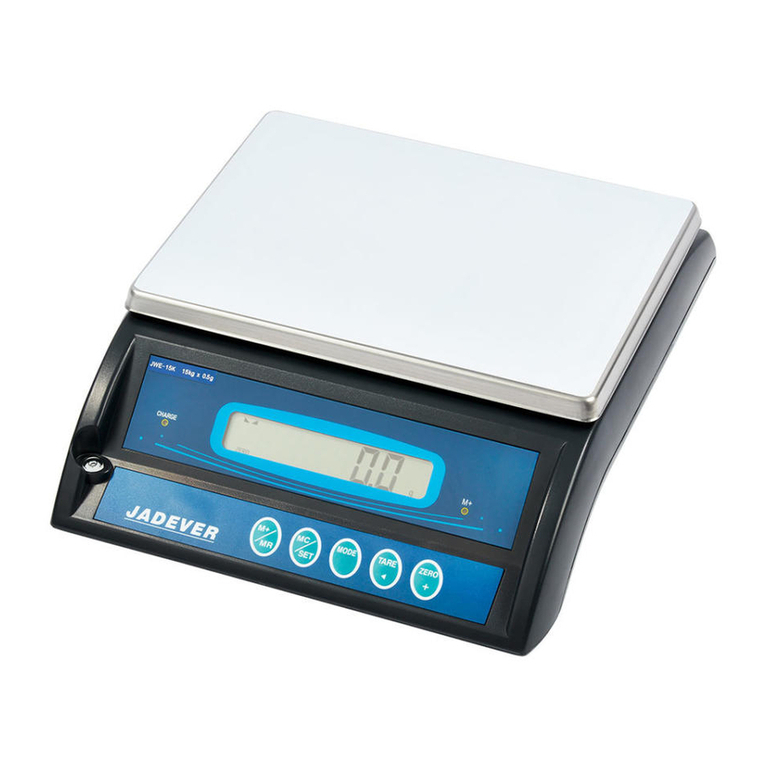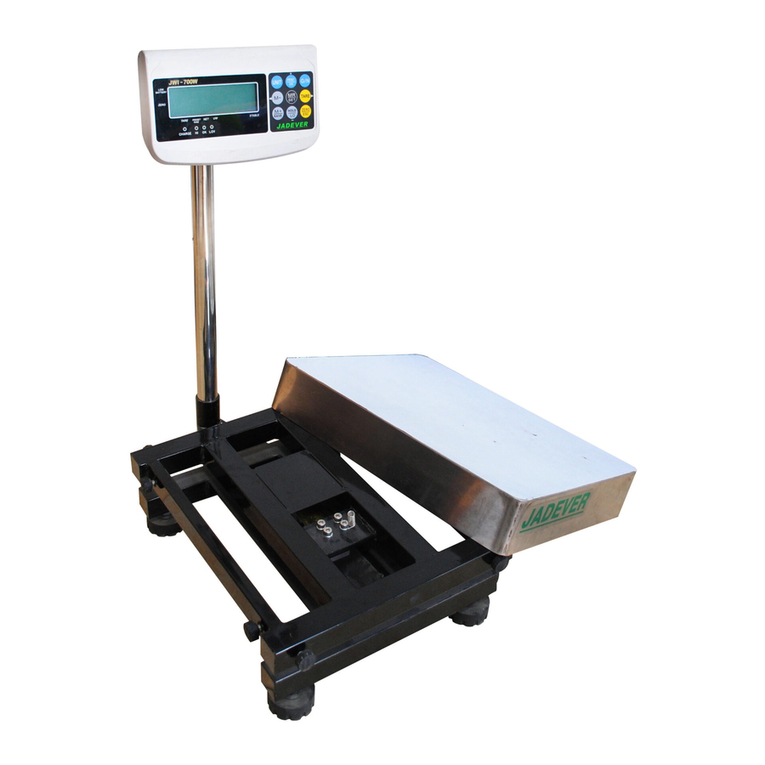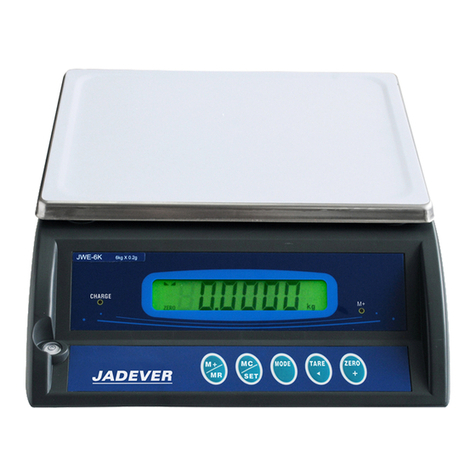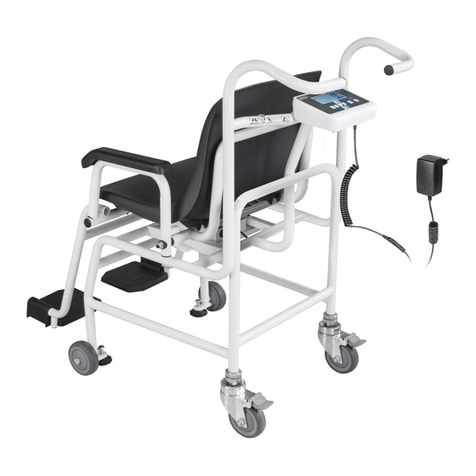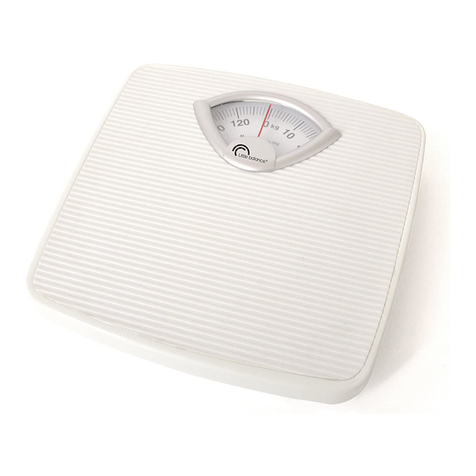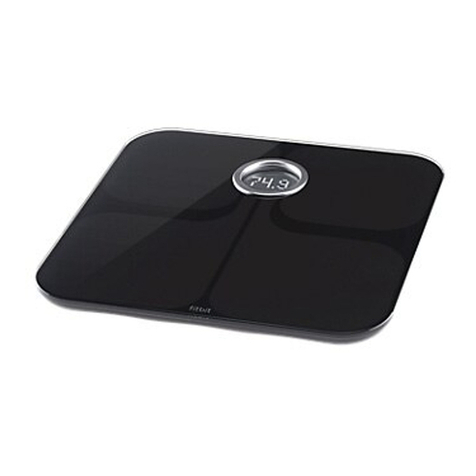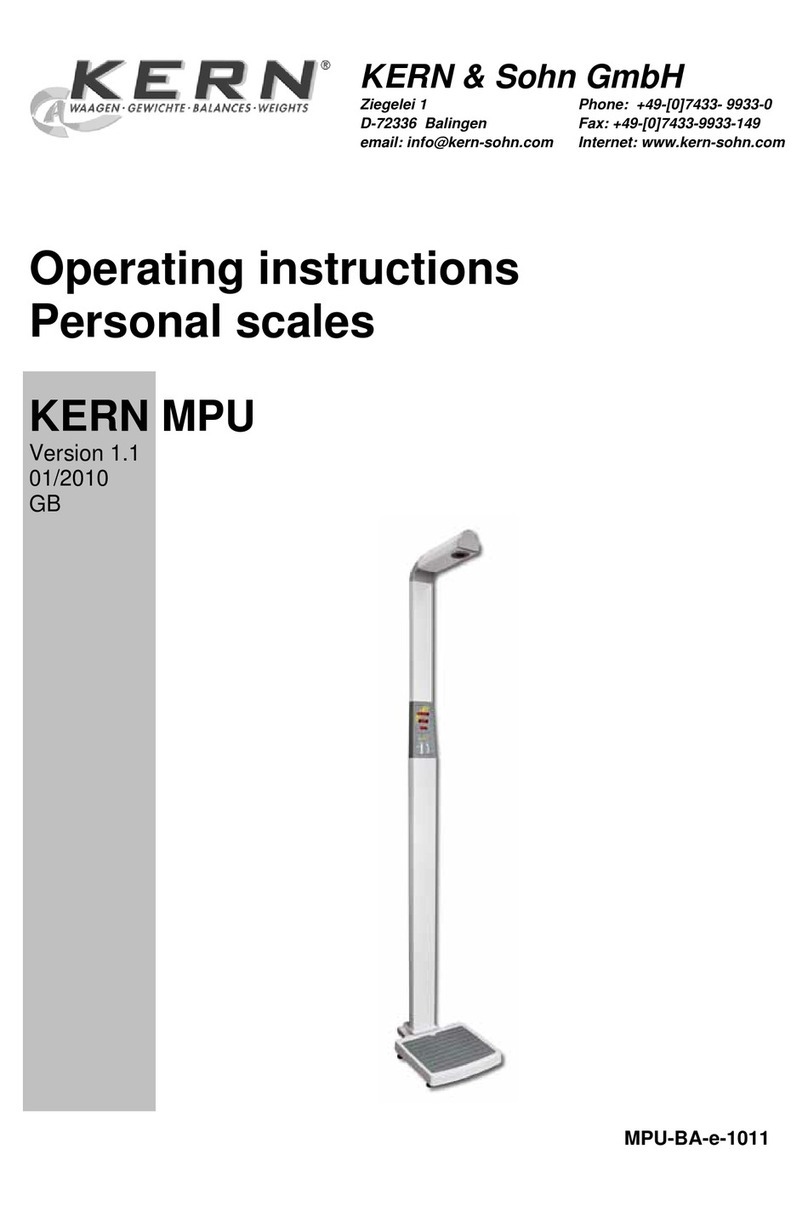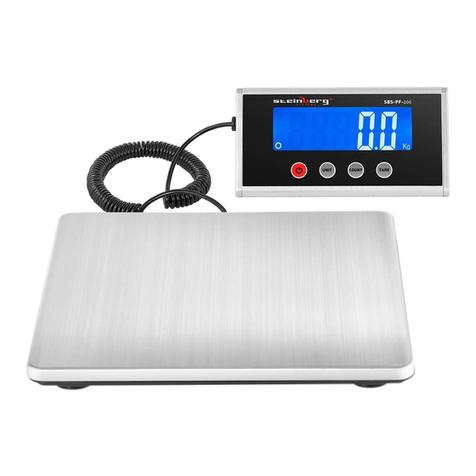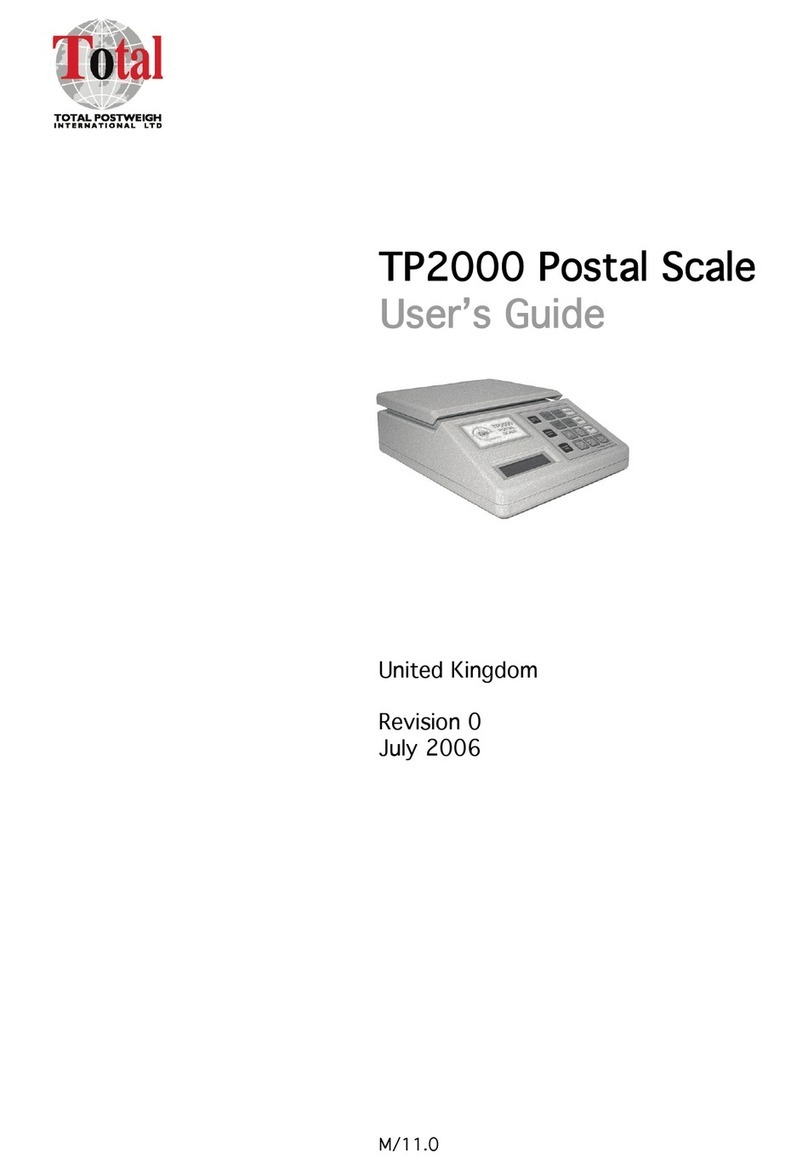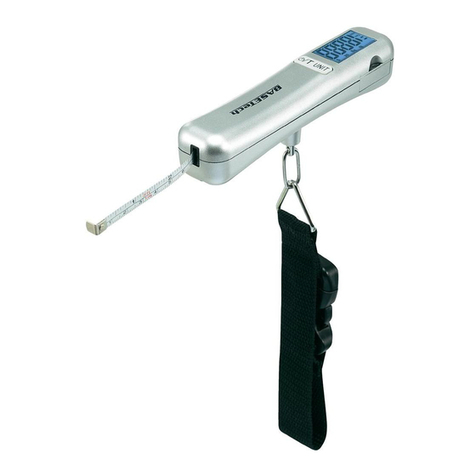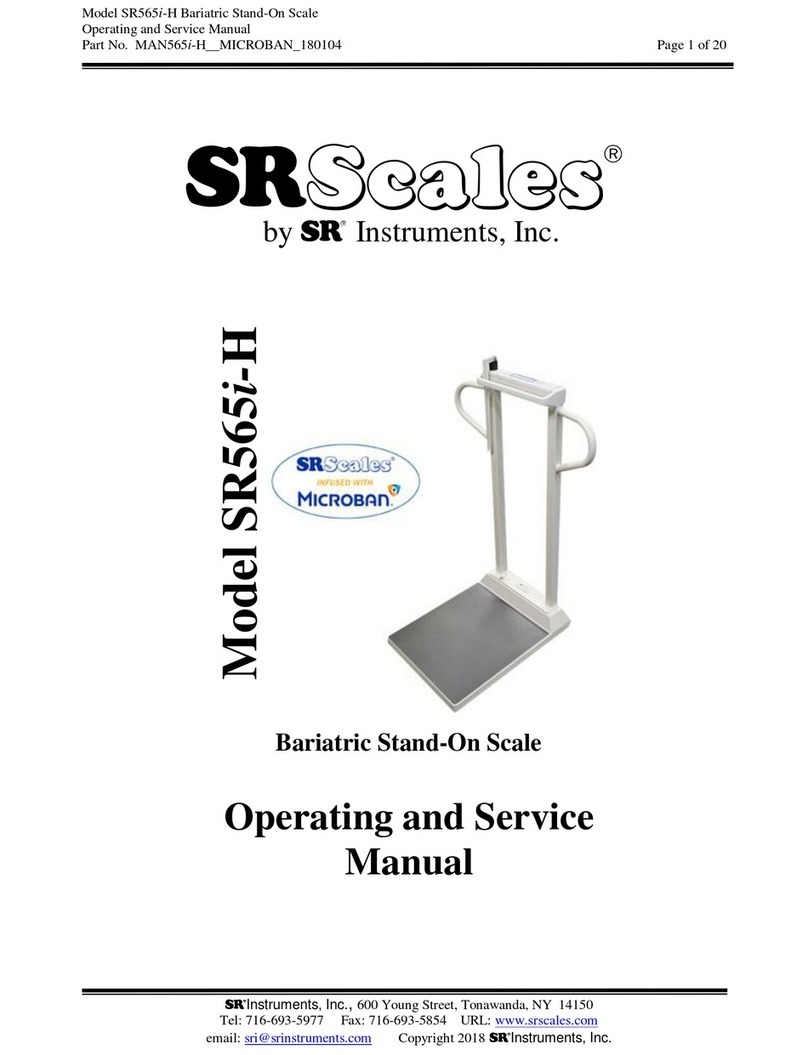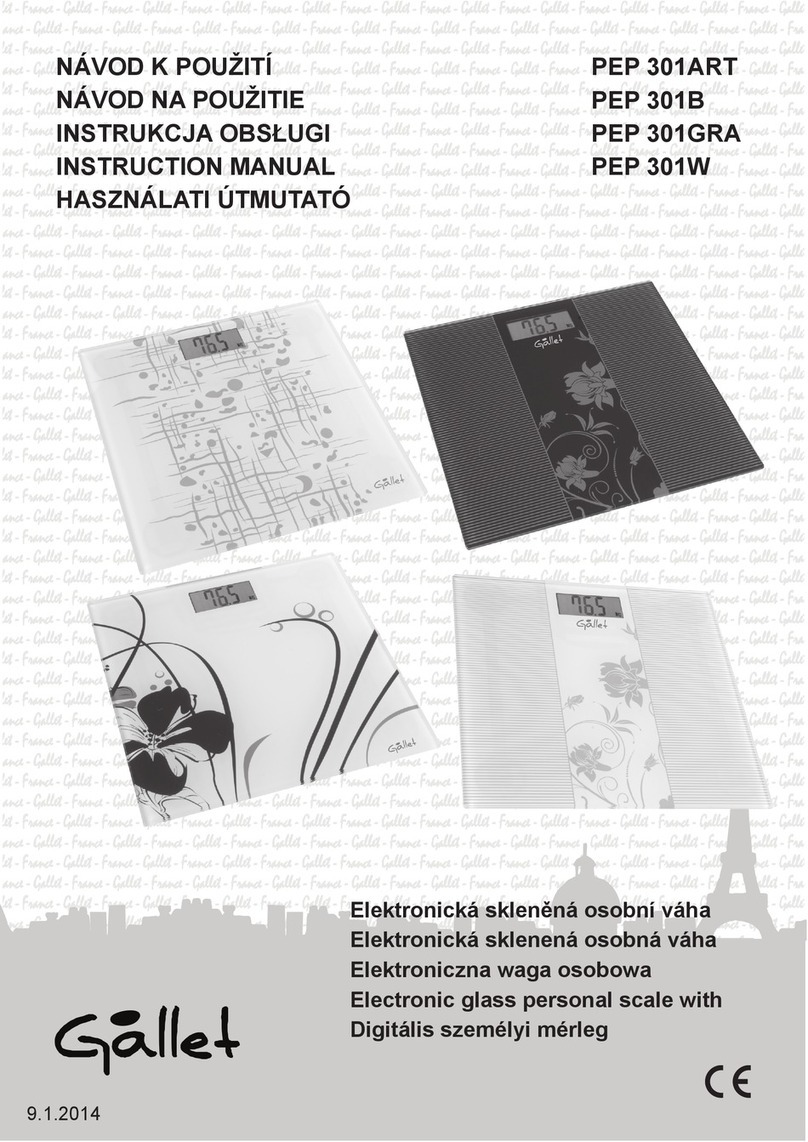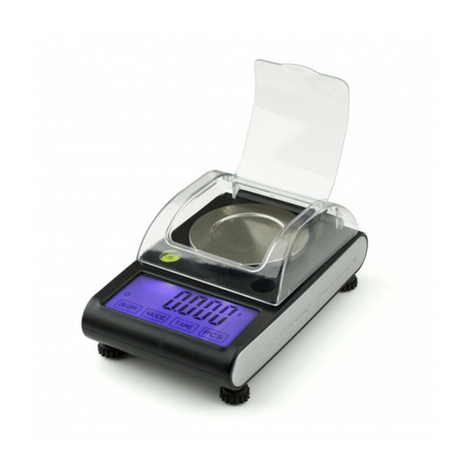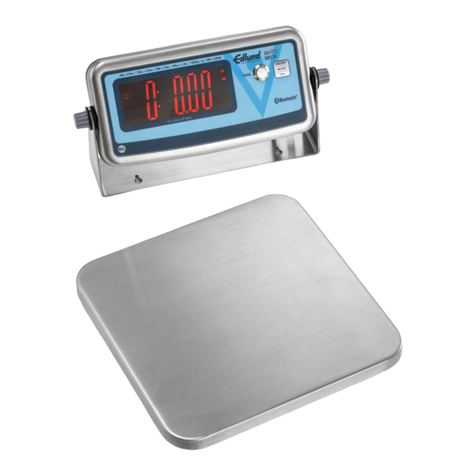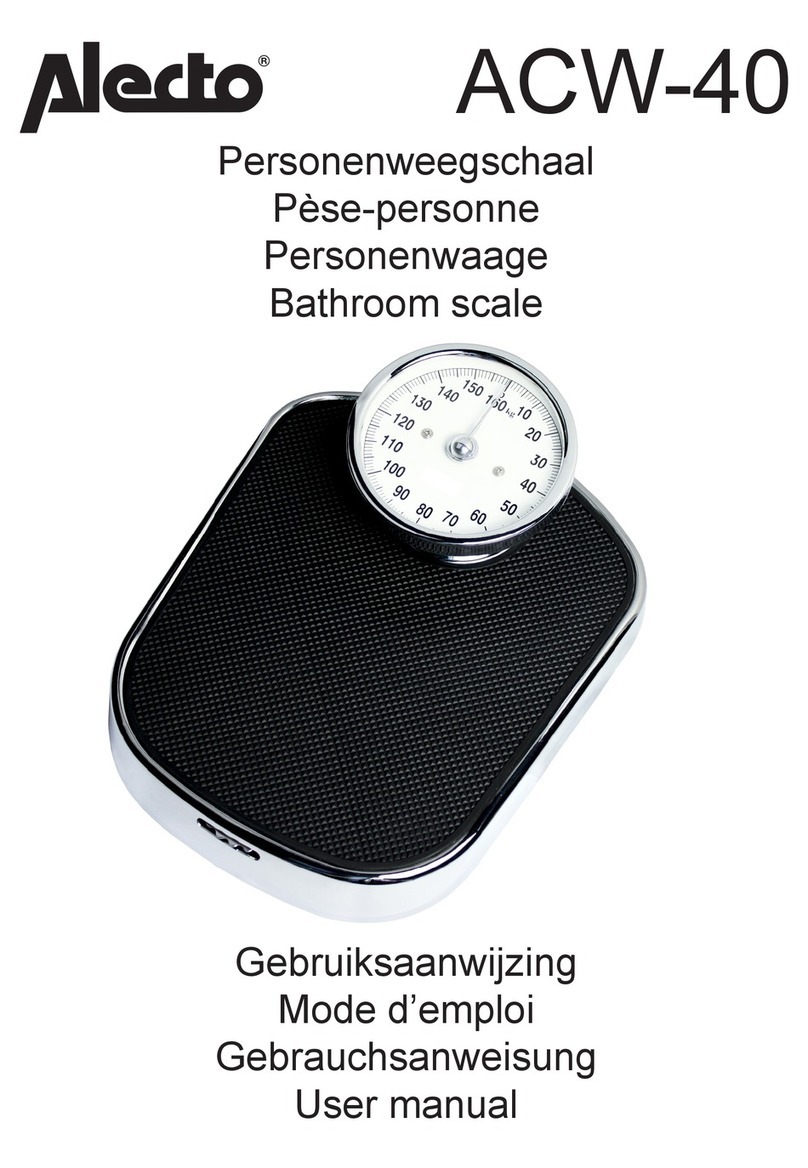12) SET11 printing format setting: prt01~prt03
13) SET12 filtering setting: 1, 2, 3, 4
1:uitable in very stable environment with the quickest weighing
2:uitable in the common environment
3:uitable in a bit shaking environment
4:uitable in the very shaking environment with the slowest weighing
14) SET13 zeroing or taring setting: stable, auto, always
stable :Taring or zeroing works when stable only
always:Taring or zeroing works no matter it is stable or not
auto: Press key TARE or ZERO when unstable, but it works when stable.
15) SET14 time setting (optional): on, off
RTC setting: press key G N/SET to enter RTC setting and set to on. Press key
G N/SET again to enter the RTC window. Press key G N/SET to enter the figure
changing and key
/MR or TARE/
to shift the figures. Press key M-/HI or
PRINT/LO to modify the value (or via numeric keys). Press key M+/SAVE to save and
shift the windows.
16) SET15 weight memory parameter: on, off
On: display the last weight when powering on again
Off: do not display the last weight when powering on again
17) SET16 the kinds of checking: Qty.ck, Wt.ck
Qty.ck: start amount checking
Wt.ck: start weighing checking
18) SET17 parameter initialization
press key G N/SET then key M+/SAVE to start initialization. It is finished when
displaying OK.
6. Single and Multi- oint Calibration
Note: Before calibration, please set the capacity first. The unit used in calibration is the one
that has been set before. During the calibration procedure, LONG press ZERO/ESC to
return to normal weighing mode without saving.
Here we take 3kg/10g as an example
1. Press and hold TARE/ while powering on.
Do not release it till the window displays “CAL”
2. With no load on the weighing pan,
